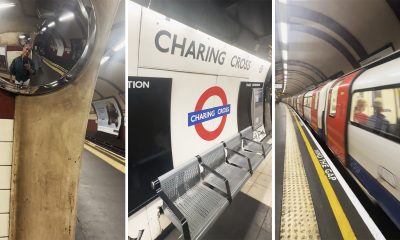Travel
Pure Oceans: Protecting our seas from plastic
Around 30 people from the local barangays of Tingloy, plus a contingent from the Philippine Coast Guard, have gathered along the shores of Barangay Marikaban to retrieve sachets, plastic bottles, bottle caps, ropes and anything that doesn’t naturally belong here.

Tingloy, Batangas – This beach is pretty remote, but somehow, it’s still covered in trash.
Mixed in with the usual influx of driftwood and seaweed are countless sachets, plastic bottles and toys – ranging from lightsabers to creepy doll heads.
“We’ll conduct a closed loop cleanup today,” Tak Vergara of Pure Oceans explains to gathered volunteers. “You’ll each be given a mesh sack, to be filled with just one type of trash. Once done, we’ll send our sacks to proper endpoints like junkshops and recyclers. Let’s please move before the morning sun gets too hot.”
Around 30 people from the local barangays of Tingloy, plus a contingent from the Philippine Coast Guard, have gathered along the shores of Barangay Marikaban to retrieve sachets, plastic bottles, bottle caps, ropes and anything that doesn’t naturally belong here.
Like everyone, I’ve been given a red mesh sack and assigned to pick up every plastic or foil sachet I see. I don’t have to look hard – the little suckers are literally coating every meter of this beach.

The Problem of Plastic
Plastics revolutionized the world: they’re inexpensive, durable, nonporous, lightweight and have a million uses. They’re so tough that most will never be fully broken down by nature. Instead, they’ll photodegrade into tiny particles called microplastics. It takes some 400 years – around 13 human generations – for this to happen.
The problem is that too many plastics are designed to be used only once. Many of the world’s third-world economies are built on a tingi-tingi culture where daily needs are bought on daily wages.
Single-use plastics like sachets, sando bags, straws, diapers and bottles account for half the plastics made today.
A report from the Global Alliance for Incinerator Alternatives (GAIA) released in 2019 revealed that Pinoys used 163 million plastic sachets, 48 million sando bags and 45 million labo bags daily. The World Bank in turn estimated that the country generated 2.7 million tons of plastic waste yearly, 20% of which ends up in our oceans.

Global studies about plastics gauged that humanity has produced 8.3 billion metric tons of plastic, 75% or 6.3 billion metric tons of which have become plastic waste. There’s so much of it that scientists have proposed this era to officially be termed the Anthropocene, a slice of time marked on the fossil record not by fossilized bones, but nonbiodegradable plastic.
Our oceans can only absorb so much. Sea turtles and whales now mistake translucent plastic bags for jellyfish, while pelagic fish swallow gleaming microplastics mistaken for plankton. Distant islands – from icebergs in the Arctic to uninhabited sandbars in the Pacific – are plastic-ridden. Even the most remote part of our planet, the Mariana Trench at over 10 kilometers deep, is littered with yesteryear’s grocery bags.
“We cannot keep ignoring the plastic problem, especially here in Tingloy,” says Pia Roxas Ocampo, founder of Pure Oceans, a marine conservation social enterprise. The Philippines is part of the Coral Triangle, where marine diversity levels are unparalleled. The Verde Island Passage, which includes Tingloy, has long been hailed as the epicenter for marine shorefish diversity.

Threat to Marine Biodiversity
Since 2018, Pure Oceans has been working with local communities in Tingloy to recover plastic profitably. “In truth, coastal cleanups like this aren’t long-term solutions,” adds Pia, picking up trash along with everyone. “These are simply emergency measures to protect the coral reefs that surround this island. These reefs aren’t just great dive sites – they sustain the livelihoods of people here.”
Plastics, whether whole or broken down into microplastics, threaten marine diversity. It’s not uncommon to see old fishing nets snagged onto coral heads, or undigested plastic in the guts of the seafood we eat.
“Microplastics concentrate and encapsulate pollutants. They’re dangerous when ingested by fish or other animals,” explains Dr. Wilfredo Licuanan, a coral expert and University Fellow at De La Salle University. “Plastics don’t just smother corals either. They can cause injuries, which increases the likelihood of corals getting sick.”
For the past seven years, Pure Oceans has been working with public and private sector partners – from the municipal government to corporations and local communities – to develop practical ways to collect and divert plastic away from coral reefs.
“We’re known as the MRF Angels because we buy hand-washed plastic and foil strips from selected participants at PHP20 per kilogram,” shares Princess Aldovino, busily filling up her sack with little plastic bottle-caps. “Tons of plastic and foil have been brought to our MRF or Materials Recovery Facility and they are used as ‘pluffing’ or ‘plastic-stuffing’ for various products locally made in Tingloy. We support several senior citizens who help convert trash into useful raw materials.”
After an hour’s work and with my mesh bag finally bursting with sachets (my wife Ngoc collected even more sachets than me), I trudge back to our collection point. Tak and Lai Manalo from Pure Oceans measure the morning’s haul: nearly 175 kilos of plastic waste, among them a cellphone, a syringe, a rubber duckie, gambling dice and some truly scary plastic dolls.

Soon we visit Caban Cove, a popular dive site. Diving here decades ago, I vividly recall having lunch in a spotless white sand beach. Now, it is covered end-to-end with broken branches, coconut husks and you guessed it, plastic. Pia and I carefully examine the debris.
“Coastal cleanups help, but each day will deposit a brand-new layer of trash. With the local community of Tingloy, we’ve developed and tested solutions to help other islands address the plastic problem,” she explains.
“We’re working on all aspects of the garbage lifecycle – from implementing corporations’ extender producer responsibility, CSR projects, developing waste management systems with local governments, environmental education for schools, plus physical cleanups along our coasts. After seven years of learning, we’re ready to replicate our solutions nationwide – but we need more partners.”
We pick through more layers of refuse. I dig out a twisted piece of seaglass, keeping it as a reminder that some things just don’t belong in the big blue. “For many Pinoys, conserving the oceans starts at home. Thinking before buying and properly segregating our waste might just prevent trash from ending up here,” gestures Pia.
We leave the area after a day’s work. Though spiritually satisfied, we barely made a dent in the tidal wave of plastics assailing the quiet island paradise. Despite this, it’s still rung with corals, still teeming with fish.
Two hundred million metric tons of single-use plastics will be produced this year, equivalent to 10 million fully-loaded dump trucks.
How many tons will end up at sea? How many new layers of trash will be added to the beaches of Tingloy and the world’s other islands?
Destinations
Checking out Street Halo-Halo Milky Ice
#LGBT checking a #halohalo ‘specialist’ in #Manila to compare it with #Chowking, #Razons, and those from #streetvendors.

Tag-init, for many Filipinos, means finding the perfect halo-halo. You can just grab one from those street vendors; almost always, they’re the best. But for those without access to those off-the-street halo-halo vendors, the next best versions would be those from supposed halo-halo specialists… such as Street Halo-Halo Milky Ice, which – like Icebergs and Razon’s – eyes to be known for giving this Pinoy dessert a twist.
@outragemag #LGBT checking a #halohalo ‘specialist’ in #Manila to compare it with #Chowking, #Razons, and those from #streetvendors ♬ original sound – Outrage Magazine
Kumusta naman ang experience sa Street Halo-Halo Milky Ice?










Una, this biz actually has sit-down venues – e.g. the one we checked in Santa Ana in the City of Manila. But exactly because they have to pay for a dining venue, they don’t just offer halo-halo, but also so-so Mexican food. At least the space isn’t bad naman, and allows you to enjoy your halo-halo away from the humidity outside.
Ikalawa, slight maingay ang staff – e.g. when taking orders from foodpanda, or when chatting with each other. Promise, disturbing siya.
Ikatlo, kumusta ang halo-halo and the Mexican snack? More particularly, we tried the ₱150 ube halo-halo and the ₱200 taco?
- With the halo-halo, the winning element is supposed to be the shaved ice since timplado na, so may additional lasa. However… the shaved ice used here may not be lumpy as the one in Chowking, but it not as smooth as Razon’s either.
- If eating at Razon’s, you know there’s not a lot of sahog. But here, even if you do get more, nothing was memorable.
- Lasa-wise, the halo-halo was quite bland… even with all the sahog and all.
- The three pieces of tacos were so-so, tasting more like some inuman venue’s beef nachos than anything else. Overloaded with fake-tasting cheese, this appears like someone’s false idea of what Mexican food really is.
If, in the past, we craved for halo-halo during summer when the heat becomes intolerable, nowadays, that halo-halo craving is now what’s normal. Climate change is real, for real. So Street Halo-Halo Milky Ice has a captured market na. But if you can find others pa rin… like those selling halo-halo in street corners, try them as well. You’re bound to be pleased more for less the price.
So off we go for more lafang venue search…
Street Halo-Halo Milky Ice is located at 2241 Syquia St., Santa Ana, City of Manila, Metro Manila.
Travel
Steak-hunting in Bulacan? We ended up in Project Steak
Attraction-wise, #Bulacan isn’t on top of tourists’ lists. But food-wise, it – surprisingly – has a handful of worthy offerings. We checked one, a #steakhouse comparable to those in Metro Manila.

Bulacan may be a big province, but tourists will – admittedly – have a harder time looking for places to visit here. Unless you’re into hard-to-reach natural wonders, or churches, churches, and even more churches.
There’s something surprising in Bulacan, though: that is, there are actually a lot of not-bad dining venues there… which was what led us to discovering Project Steak.
How was the place for us?
@outragemag Lost in #Bulacan and looking for okay #food? We checked the #steak #fishandchips of @projectsteakbaliwag in #baliuagbulacan for this #LGBT ♬ original sound – Outrage Magazine
Una, Bulacan is a big province, so if you’re nowhere near Baliuag, you may find this place too hard to go to (particularly if you’re not driving). This is over an hour away from the City of Manila, passing through Obando, Bocaue, Guiguinto, Malolos, Pulilan, et cetera… so yeah, this isn’t the most accessible place to go to.
Ikalawa, the actual resto is actually small; seriously small. Luckily, there are two seating areas, so to speak. The resto itself has an airconditioned room that can only seat a handful; and a non-airconditioned area that it shares with Mimi’s, the café beside it. The airconditioning isn’t that cold naman, so staying outside may make sense particularly for those who are claustrophobic.
Ikatlo, keri naman ang personnel, able to explain what’s on the menu.
Ika-apat, how was the food?
- The Fish and Chips (₱300) was actually good, comparative to those from delis in – say – some suburb in Australia. The fish wasn’t malansa, was properly battered, and was well cooked. The chips – or fries – naman were of good quality, not disintegrating to the touch.
- The Meatballs Tomato (₱250) was so-so; that is, the meatballs tasted nice, but the pasta was just too sweet. Ganito: If you added more pasta, the sweetness of the sauce would still overhwlem.
- The Signature Ribeye Steak (₱550) was a bit small, though not surprising considering the asking price. Ordered MR, it was properly done, with the meat still juicy. You don’t get a lot of accompanying veggies; though the eggs we ordered in place of the potatoes were well done.
- The Surf and Turf (₱650) was basically a Ribeye Steak… with grilled shrimps. For both steaks, if there’s a major comment, it’s the lack of seasoning. Yeah, you can just add salt and pepper; but it tastes different when meat is seasoned before or during cooking since nanunuot ang lasa. The mashed potato was too margarine-y, and so was so-so. The shrimps were good even if they were somewhat small.
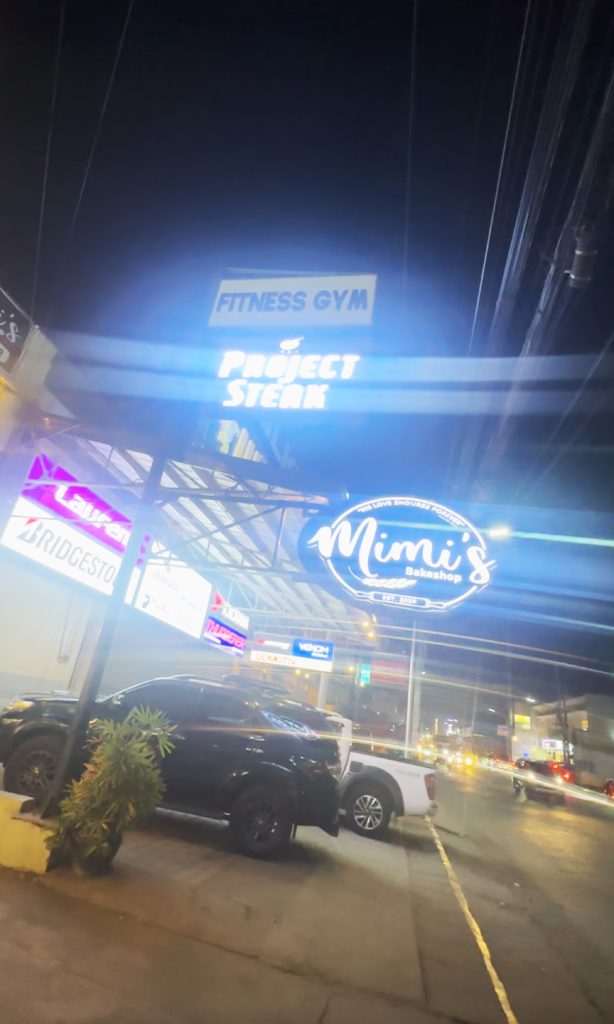
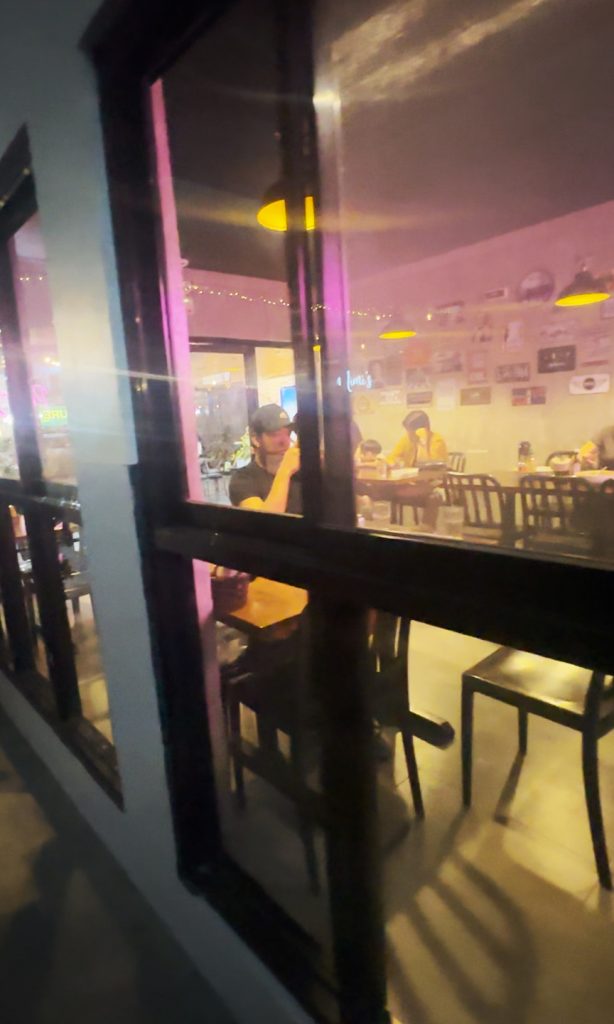

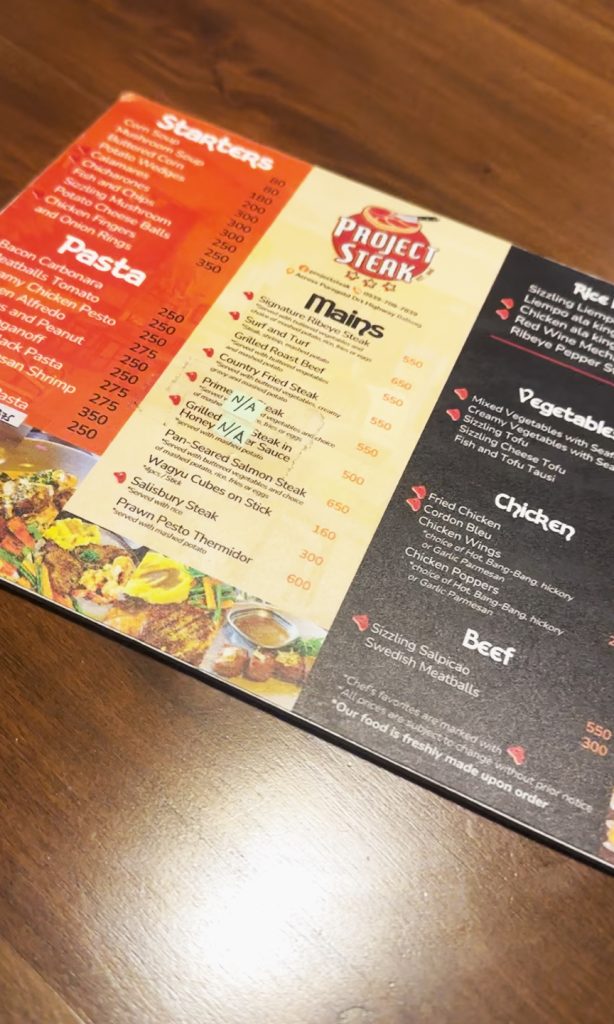

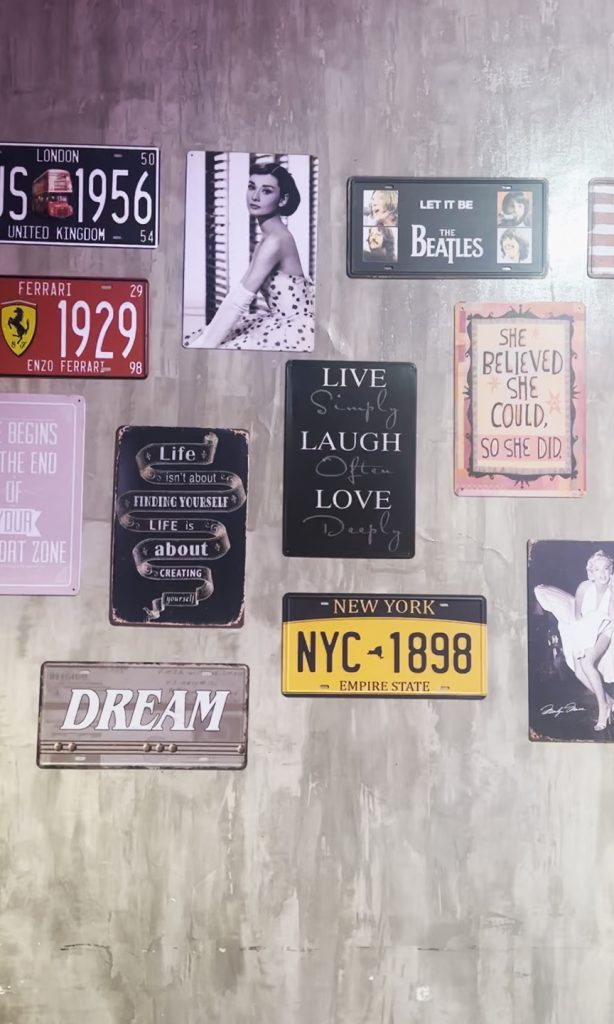

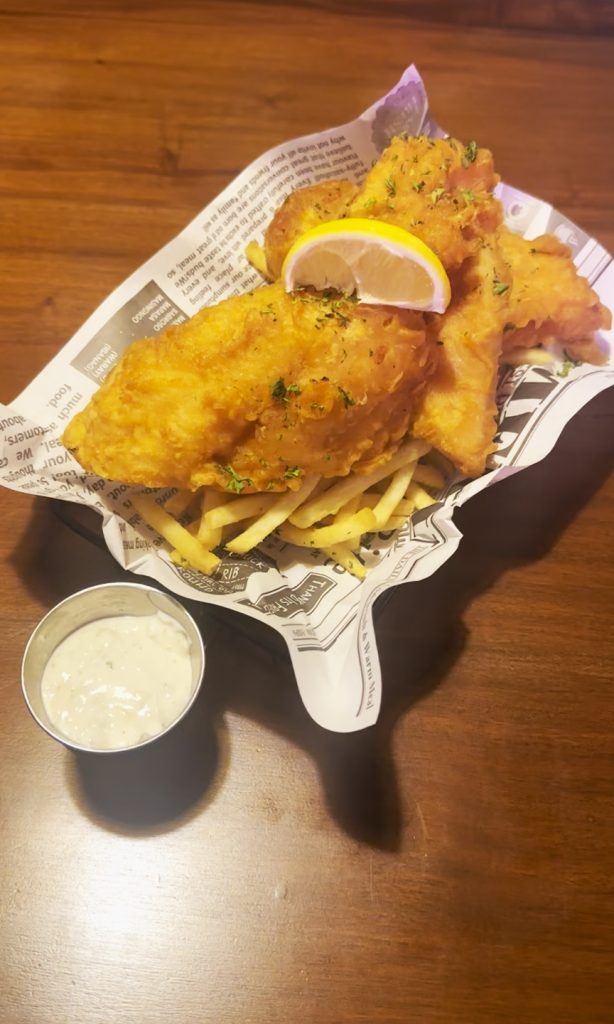
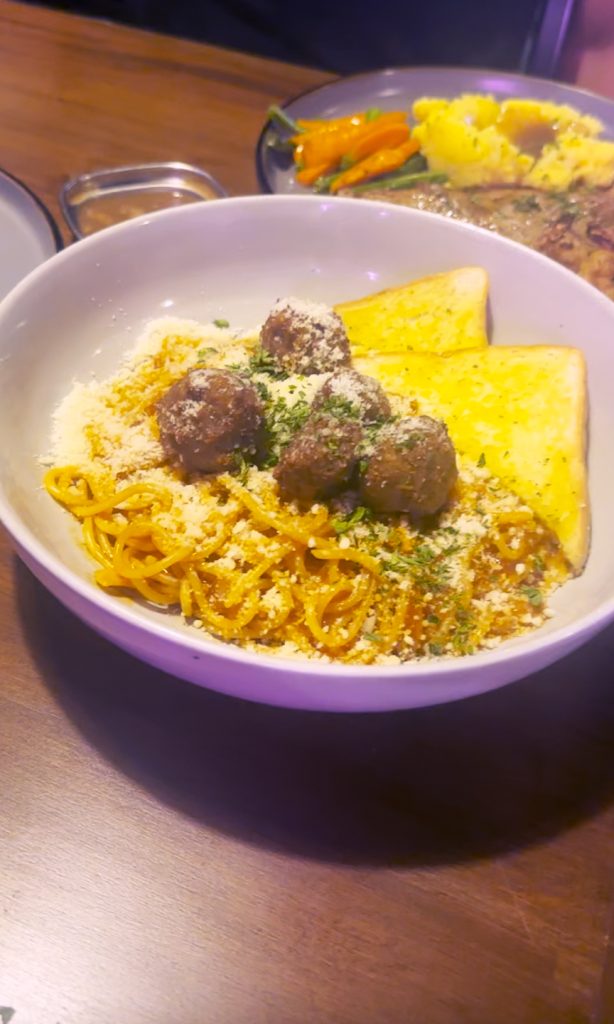
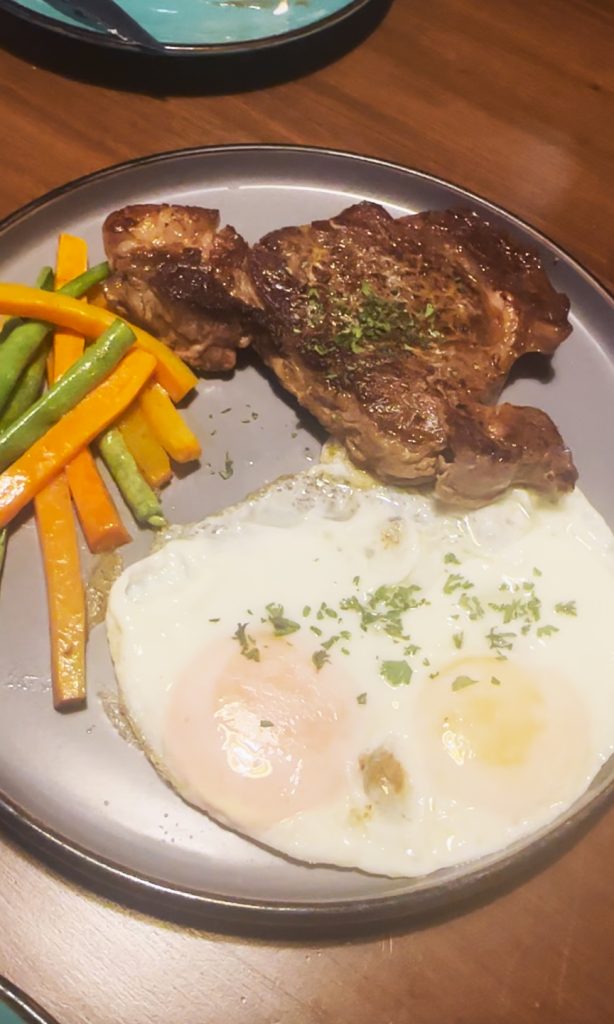
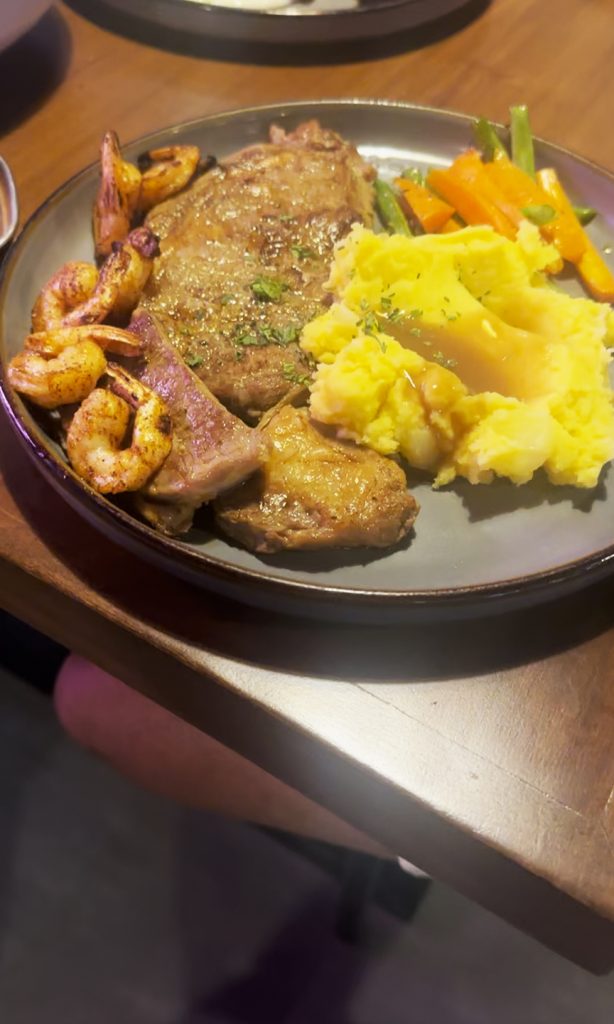
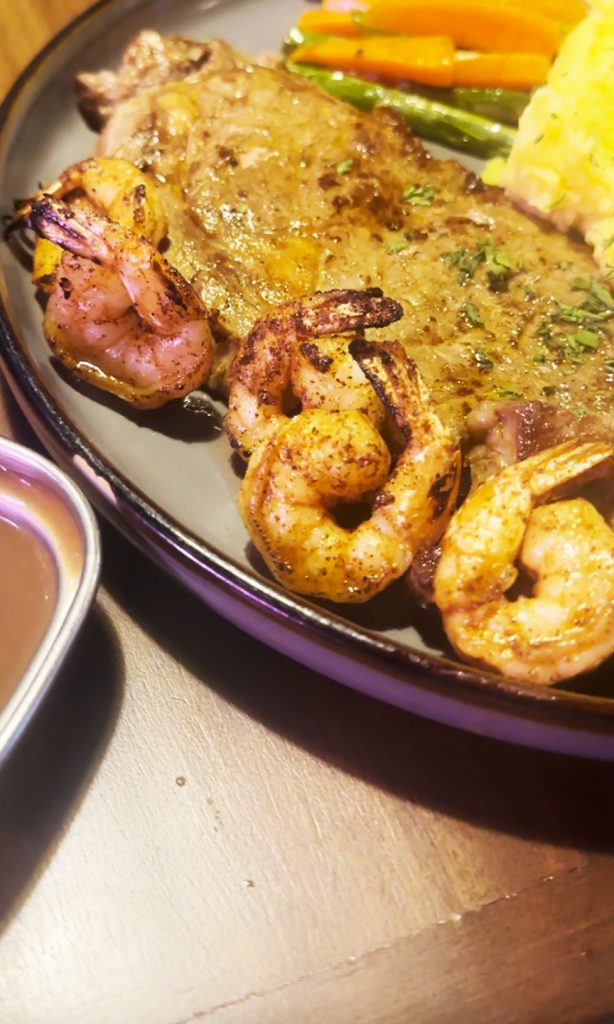

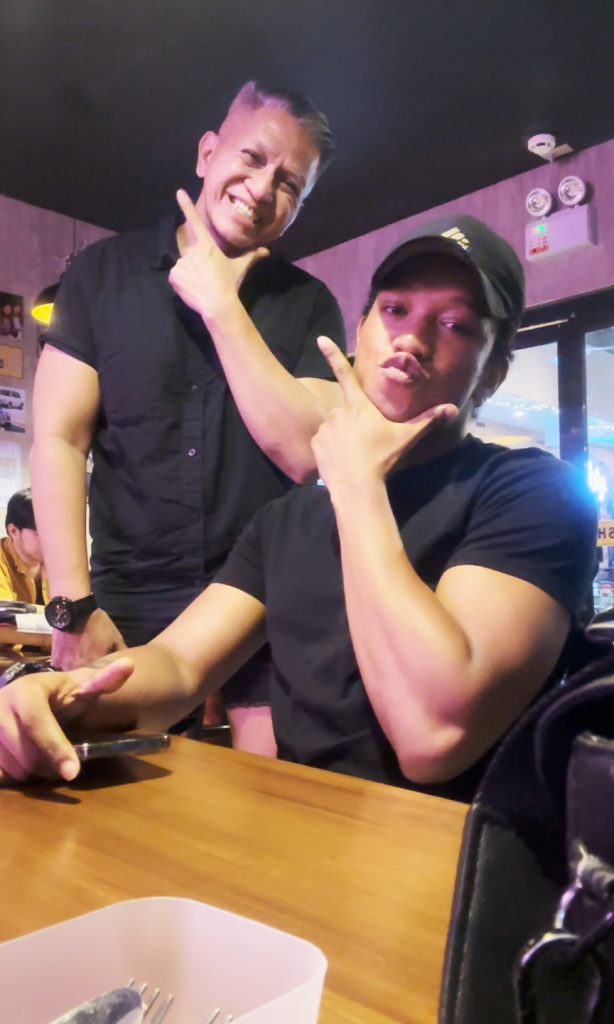
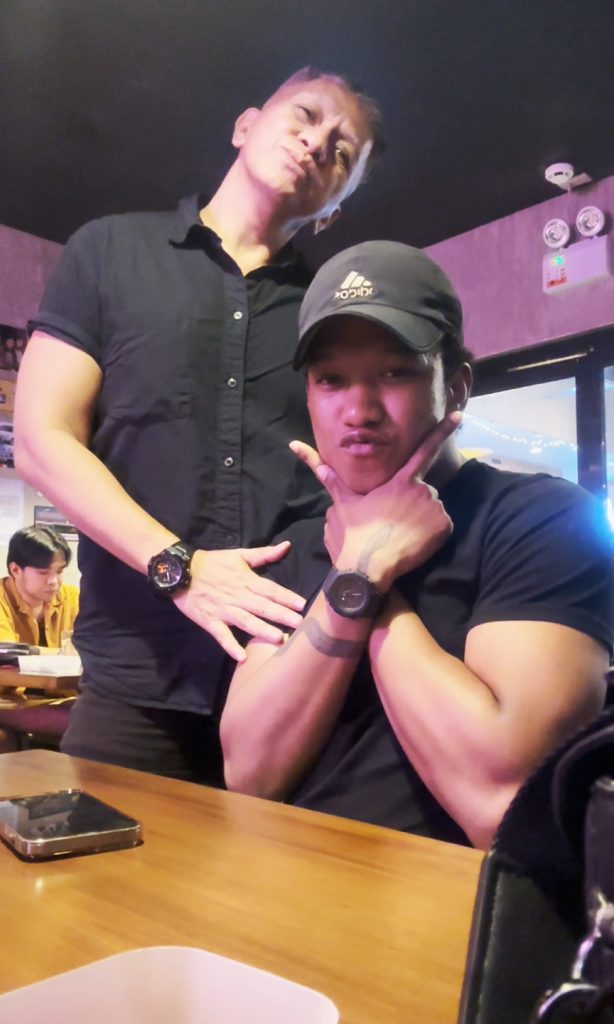
Is it worth to dayo, to target Project Steak? If you’re nearby and are looking for affordable steaks, perhaps. The ambiance is good, the offerings are presented well (check the plating!), and so on. But if it’s too far for you, and if there are other options for the same price wherever you may be, stay there na lang. That way, walang sisi.
Otherwise, join us as we look for more lafang venues.
Project Steak is located along Doña Remedios Trinidad Hwy, Baliuag, Bulacan. For more information, contact 0939 708 7839 or 0923 631 2559.
Travel
Checking the London Underground
UK’s London Underground serves millions every day, an example of a working train system (that we do not have in the Philippines). Sadly, 1 in 5 LGBTQIA+ travelers experience crime while using it, and 65% did not merit support from bystanders.

One way for Filipinos who are able to travel overseas can tell how bad our public transport system is, is by comparing the trains. We were invaded by White people in 1521, but – even now – we still only have three train lines.
@outragemag Check #LondonUnderground #trains in #London, aware it could be unsafe for #LGBT ♬ original sound – Outrage Magazine
UK, as an example, has the London Underground. Managed by Transport for London, this started in 1863 as the world’s first underground passenger railway. It now has 11 lines with 250 miles (400 kilometers) of track, with its 272 stations serving around five million passengers every day.
This isn’t a perfect system. Obviously, this is London-centric. It only serves the Greater London area, and some parts of the adjacent counties of Buckinghamshire, Essex and Hertfordshire in England. This is like saying na wala ngang LRT or MRT sa Bulacan o Cavite o Antipolo eh, and this lack highlights the exclusion of those also in need of proper public transport.
Looking at London’s train system through the LGBTQIA+ lens is actually disheartening… particularly if we talk not only about possibly meeting booking while riding trains. In 2023, London TravelWatch released a report that revealed that when LGBTQIA+ people used public transport:
- One in five (21%) experienced hate crime in the past year while travelling on public transport in London
- Four in five (82%) respondents changed their behavior or appearance to ‘fit in’ so they avoid abuse or harassment when travelling
- 65% of those who experienced abuse or harm when travelling in London said bystanders witnessed the incident but did not intervene
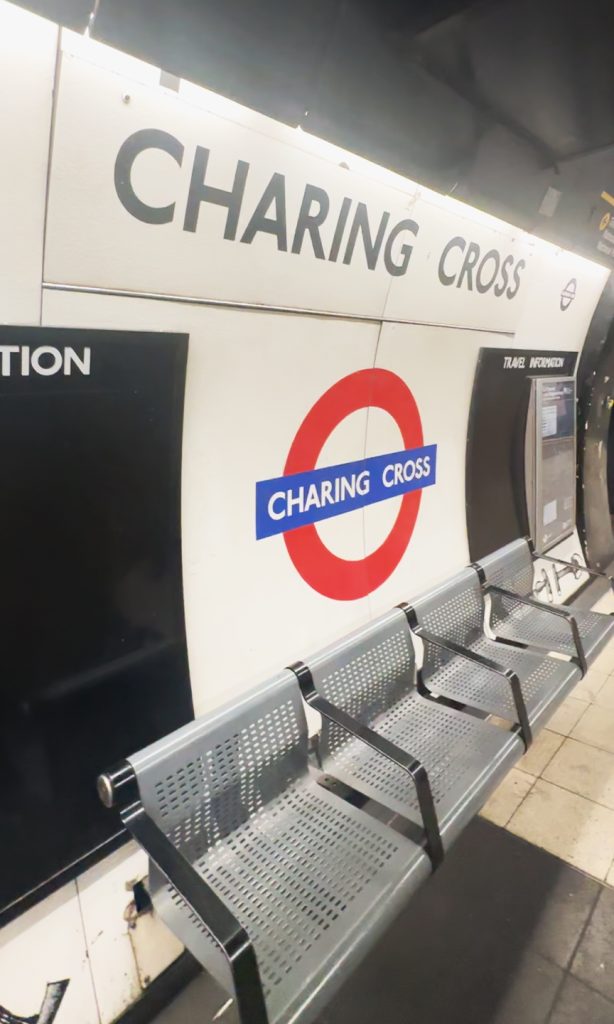
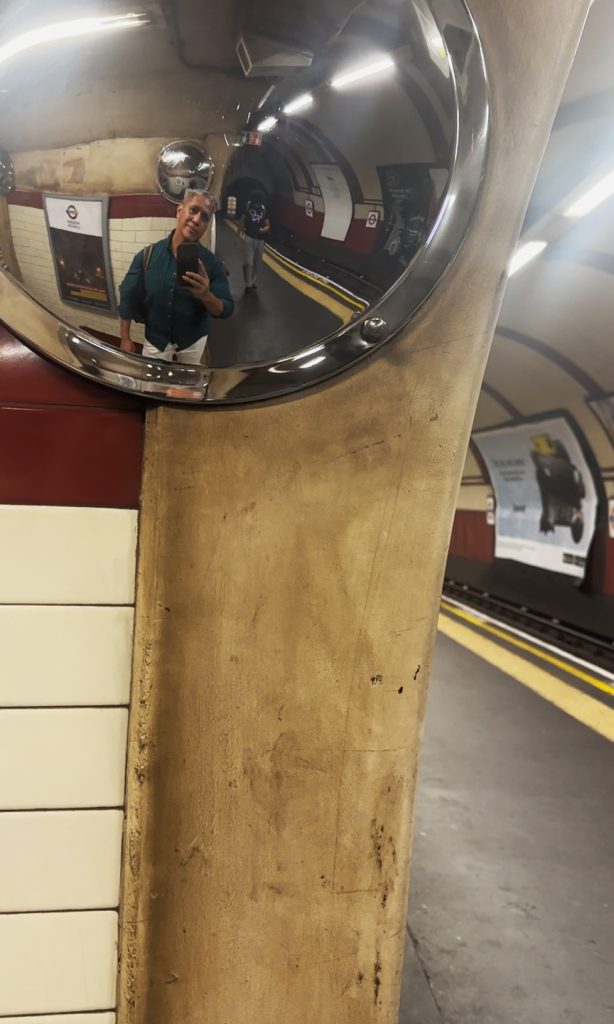

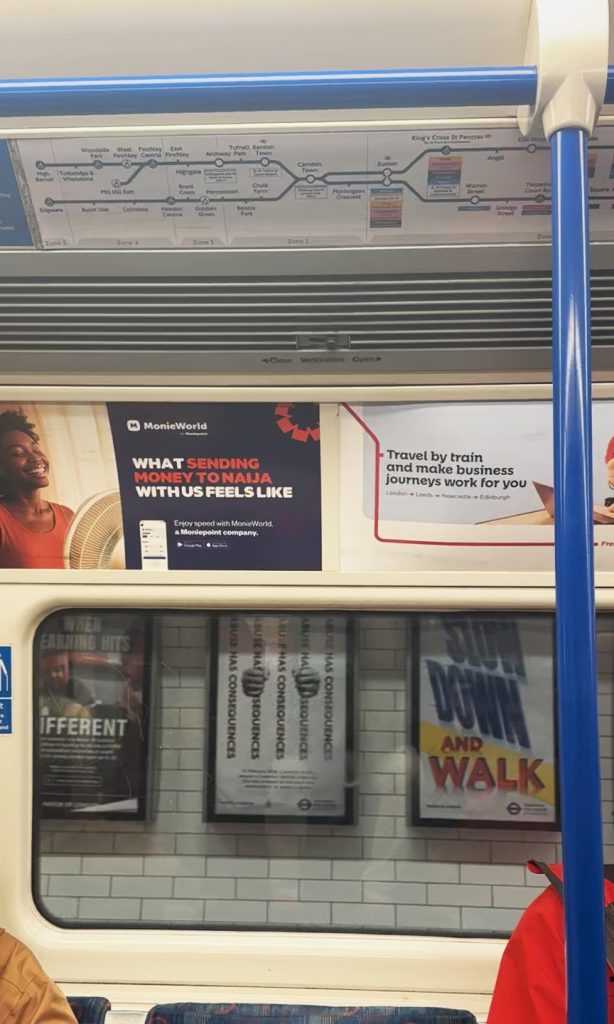
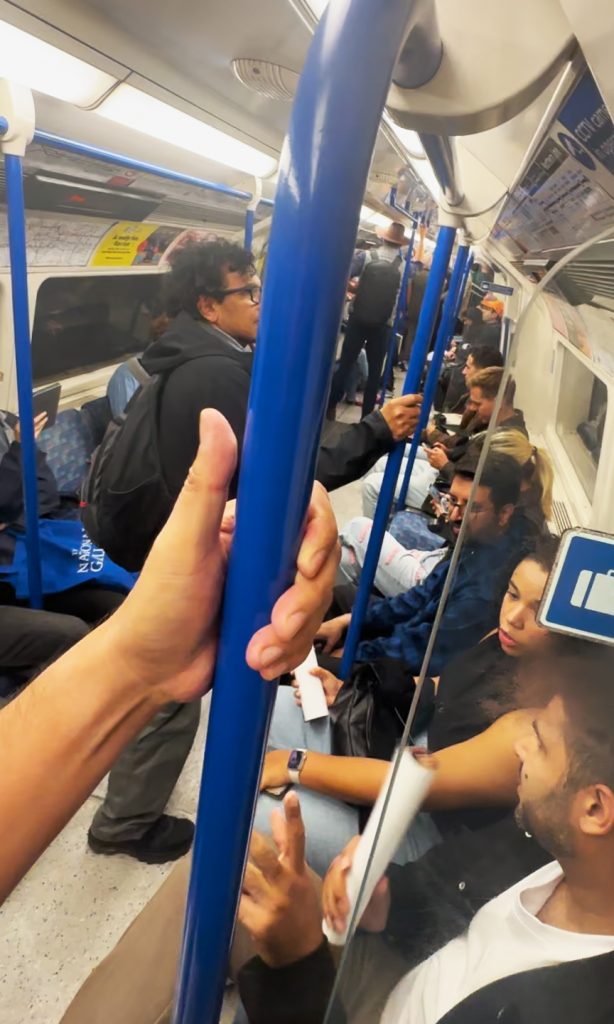
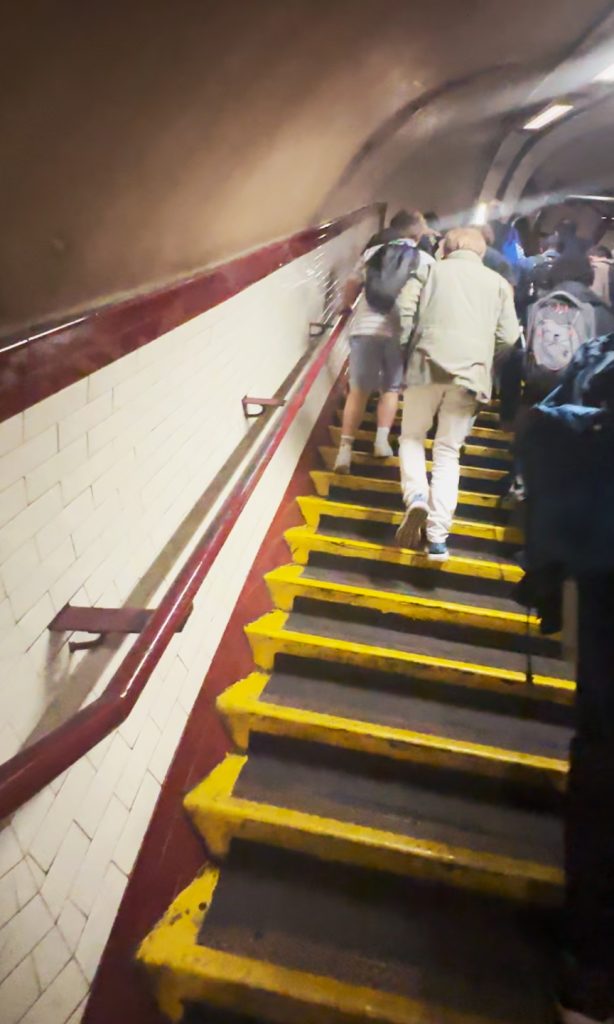

Lesson learned lang din: that even in spaces that better people’s lives, like a working train system, there are minority sectors that could be disadvantaged. And so this must always be considered to make sure all spaces are truly inclusive.
But off we go for more LGBTQIA+ rampa…
-

 Product Showcase3 weeks ago
Product Showcase3 weeks agoManulife Philippines ‘Time to MOVE’ symposium focuses on health and longevity
-

 NewsMakers1 week ago
NewsMakers1 week agoMillennials and Gen Zs prioritize health, purpose, financial independence, but health and wellness gaps persist
-

 Product Showcase1 week ago
Product Showcase1 week agoAIA Philippines CEO named Executive Champion of the Year in Asia
-

 Travel4 weeks ago
Travel4 weeks agoSteak-hunting in Bulacan? We ended up in Project Steak
-

 Destinations2 weeks ago
Destinations2 weeks agoChecking religious expression at Montemaria in Batangas
-

 Product Showcase1 week ago
Product Showcase1 week agoKorean brand Wells showcases 23 years of engineering innovation
-

 Destinations3 weeks ago
Destinations3 weeks agoBeach-hunting led to Malabrigo Beach
-

 Product Showcase3 days ago
Product Showcase3 days agoManulife brings personalized gut health insights to PH




